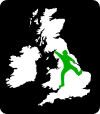
- The most recent issue to be published was 132
- For further information, please see Publishing/Despatch Schedule
- Database last updated on Mon, 01 Dec 2025 18:30:34 +0000
- Online access is currently available for all issues. Some of
the older issues are bit-map scans rather than digital copies.
journal scans.
- Online voting for CREG articles was withdrawn in June 2022. For info see
Voting for CREG articles
Contents of journal 111
September 2020
This page may take a few
seconds to load. Please wait ...
- CREG Journal 111 (0-28)
(PDF 5.9MB)
  Individual articles may be available below Individual articles may be available below
- This issue has a cover date of September 2020 and was published on 1 September 2020.
-
- Front Cover (1)
(PDF 2.1MB)

- While ascending 12 metres in a CaveSim system at CityROCK Climbing Gym, a schoolboy waves through a Plexiglass window from the vertical cave into a viewing area. Photo: Mark Reis
-
- Contents (2)
(PDF 249KB)

- List of contents and masthead information.
-
- News and Notes (2) For download see previous item
- Virtual Conventions, Rob Gill
-
- Internet in a Big Box (3-4)
(PDF 341KB)

- Jangala, a charity, has developed an innovative approach for providing Internet access in developing countries and during humanitarian emergencies. Tony Haigh reviews this 4G-based package and considers possible cave-related applications.
-
- Modelling Microwave Propagation along Passages using LiDAR and Ray Tracing (5-7)
(PDF 870KB)

- Mike Bedford describes how the availability of accurate 3D cave models, achievable using handheld laser scanners, has allowed propagation along irregular cave passages to be more accurately modelled using ray tracing.
-
- Photo Stacking in Cave Photography (8-9)
(PDF 467KB)

- Knut Brenndörfer considers a different approach for cave photography. This post-processing workflow shifts the most time-consuming parts of the creative process from the cave into your warm apartment.
-
- The Parallel-Fed Voltage Multiplier(10-12,22)
(PDF 377KB)

- Voltage doublers and the Cockcroft-Walton voltage multiplier are examples of devices that use capacitors as charge-pumps to generate a high voltage at a low power in a relatively simple circuit. The conventional voltage multiplier is series-fed, acting as a 'bucket brigade' to pass the charge from one element to the next. This is difficult to analyse, as well as being inefficient, with a law of diminishing returns applying. A better scheme is the less well-known parallel-fed device, which has several advantages. David Gibson analyses this device, arguing that it deserves to be better known, and suggests some possible cave electronics applications.
-
- We Hear (13)
(PDF 353KB)

- Roundup of news and events: Mike Bedford brings us the latest to impact the world of cave radio and electronics. Pull Chord Light and Power, Cross-band Repeater Controller, WaterLily Gets an Upgrade.
-
- Micropower Lesser Horseshoe Bat Sensor (14-19)
(PDF 1.5MB)

- A new design for a low-power bat sensor has been deployed at five major regional cave sites for the winter months of early 2020. Stuart France presents data logger results showing similar timings across all these caves suggesting that hibernating bats are roused by common factors such as external weather patterns and then influenced by such thereafter. Relatively low counts at one entrance suggests that its substantial locked gate is impacting bat access to potential habitat within.
-
- Web Watch (19)
(PDF 372KB)

- Lots of links this time, from batteries to power tools and satellites to thermal imaging, from Peter Ludwig.
-
- The Mystery of the Missing Energy (20-22)
(PDF 356KB)

- Whenever a capacitor is charged, energy seems to go missing. This has consequences when designing equipment that makes use of capacitor charging, such as a charge pump. David Gibson explains the phenomenon and challenges the reader to say where the supposedly missing energy might have gone.
-
- The Ongoing Story of CaveSim: the Artificial Techno-cave for Training and Education (23-24)
(PDF 505KB)

- Dave Jackson brings us up to date on the CaveSim educational facility by describing recent software improvements and other key developments.
-
- Building Blocks (25)
(PDF 439KB)

- The 'bargraph' display - applications and circuitry by Tony Haigh.
-
- Earth Resistivity Surveying: a New Approach (26-28)
(PDF 469KB)

- Mike Bedford presents a novel intelligent electrode, as a top-level design, aimed at making earth resistivity surveying an easier to use method of cave detection. [diagram on p28 revised 17 Nov 2020].
-

|

View Contents:

BCRA is a UK registered charity and is a constituent body of
the British Caving Association,
undertaking charitable activities on behalf of the BCA.
BCRA publishes a range of periodicals and books.
Click here for further information.
|
Searching
To Search our pages using Google, type a search
string in the box at the top of the page and hit your Return key
You can also search our publications catalogue at the British Caving Library
The CREG Journal Search Engine is a new, powerful search engine which will, sometime, be extended
to cover Cave & Karst Science. We have a keyword search facility on our Cave Science Indexes pages but this may be rather out-of-date.
|
For staff use: Link to Database
Show/Hide
download figures next to each item (if available and non-zero; you might need to refresh page first). Counters last
reset on Thu 03-Jan-2019 17:29:28 +00:00. The figures are non-unique
click-throughs.
|









